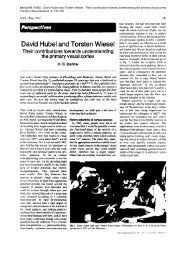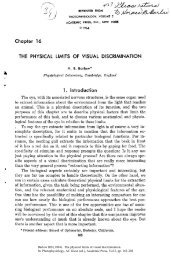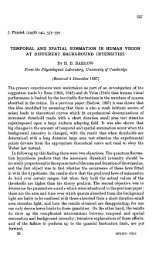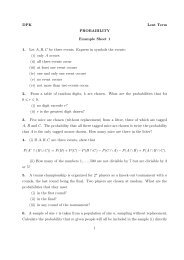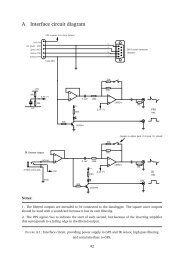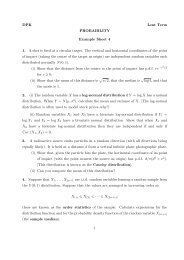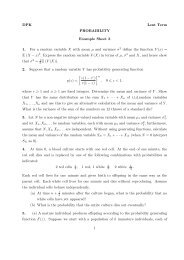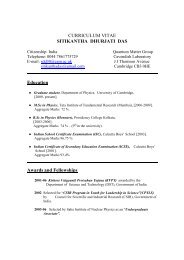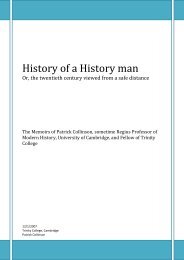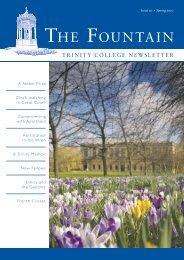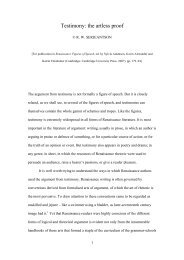Hume's General Rules - Serjeantson
Hume's General Rules - Serjeantson
Hume's General Rules - Serjeantson
Create successful ePaper yourself
Turn your PDF publications into a flip-book with our unique Google optimized e-Paper software.
<strong>Serjeantson</strong>-10<br />
naturally carries us to a lively conception of the usual effect.’ 32 <strong>General</strong> rules are part<br />
of the accumulated experience that enable us to understand, and function in, the<br />
world. 33 If we are philosophers, however, we also use general rules to correct these first<br />
impressions, in accordance with ‘the more general and authentic operations of the<br />
understanding’. 34 Hume illustrates the way in which ‘our general rules’ are thus ‘in a<br />
manner set in opposition to each other’ with an example. He asks us to consider the<br />
case of a man hung from a high tower in an iron cage. This man, Hume asserts,<br />
‘cannot forbear trembling’, even though ‘he knows himself to be perfectly secure<br />
from falling, by the solidity of the iron which supports him’. 35 The general rule that<br />
great height presents a great danger is set against the general rule that iron provides a<br />
secure stay. The one kind of rule is supplied by the imagination, the other by the<br />
judgment. Hume does not draw the moral explicitly, but his account certainly implies<br />
that, tremble though he still might, a caged philosopher would tremble less than a less<br />
reflective prisoner.<br />
Hume ascribed a good deal of importance to his ‘general rules’; so much so, in<br />
fact, that in the Treatise he articulated a set of them to judge the relations between<br />
causes and effects. According to Hume’s account of causation, it is in principle<br />
‘possible for all objects to become causes or effects to each other’. In order to<br />
determine ‘when they really are so’, Hume provides his set of eight general rules.<br />
These rules are intended to distinguish ‘accidental circumstances’ from ‘efficacious<br />
causes’. They include such stipulations as, ‘The cause and effect must be contiguous<br />
32 Hume, Treatise, p. 150 (1.3.13). Charles J. McCracken, Malebranche and British Philosophy<br />
(Oxford: Oxford University Press, 1983), p. 279, notes the shared preoccupation in Hume and<br />
Malebranche with the capacity of the imagination to confuse constant conjunction with necessary<br />
connection.<br />
33 On this point, see also David Owen, 'Philosophy and the good life: <strong>Hume's</strong> defence of probable<br />
reasoning', Dialogue, 35 (1996): 485-59, pp. 491-92.<br />
34 On this point, see also Noxon, Hume’s Philosophical Development, p. 87; Martin, ‘Rational<br />
warrant’, p. 251; Owen, Hume’s Reason, p. 212.<br />
35 Hume, Treatise, p. 148-49 (1.3.13).



